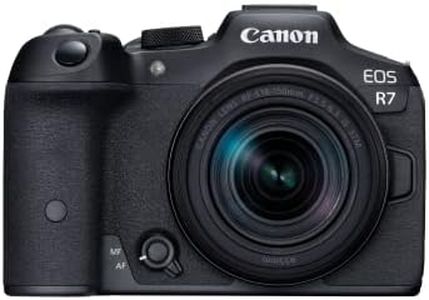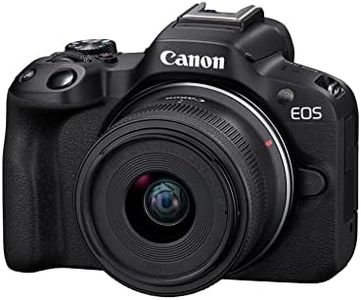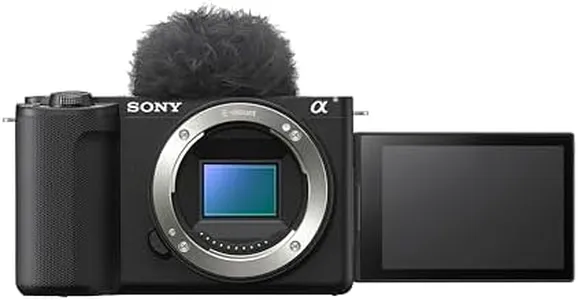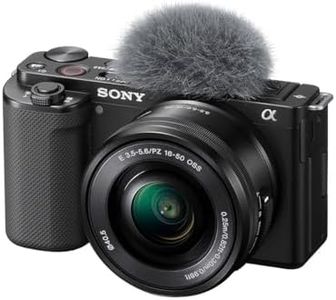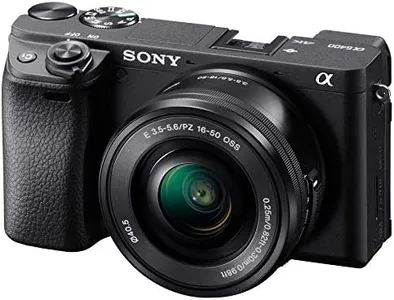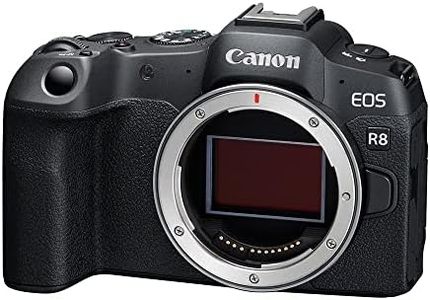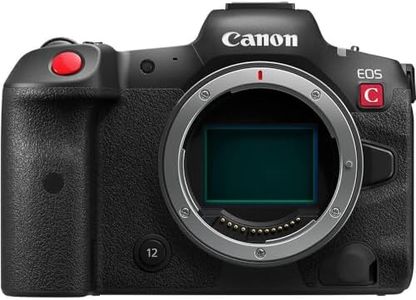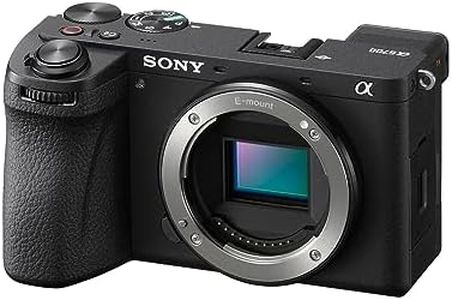We Use CookiesWe use cookies to enhance the security, performance,
functionality and for analytical and promotional activities. By continuing to browse this site you
are agreeing to our privacy policy
10 Best Cinema Cameras
From leading brands and best sellers available on the web.Buying Guide for the Best Cinema Cameras
Choosing a cinema camera is an exciting process, especially if you want to create professional-looking videos or films. Cinema cameras are designed for high-quality video production, and when picking the right one for you, it's important to think about the kind of projects you want to shoot, where you'll be filming, and how much experience you have with camera gear. Focus on key technical features that directly impact your workflow and the final image, and always consider how each feature matches your style and needs.Sensor SizeThe sensor in a cinema camera is the part that captures light and transforms it into a video image. Sensor size affects the depth of field (how blurry the background looks), field of view (how much of the scene you can see), and low-light performance. Larger sensors can provide a more 'cinematic' look with pleasing background blur and can handle low light better. The common sensor sizes are Full Frame, Super 35, and Micro Four Thirds, with Full Frame being the largest. Beginners or those filming in tight spaces might find smaller sensors easier to manage, while larger sensors are good for those seeking maximum image quality and background blur.
ResolutionResolution refers to the number of pixels captured by the camera, typically measured as 1080p (HD), 4K, 6K, or even 8K. Higher resolutions allow you to capture more detail and make it easier to crop or zoom in without losing image quality. However, higher resolution files also take up more storage space and require more powerful computers to edit. If you're making online content or smaller projects, 1080p or 4K is usually sufficient, while those planning high-end productions or lots of post-production cropping might benefit from 6K or 8K.
Dynamic RangeDynamic range is how well a camera can capture details in both very dark and very bright areas of a scene at the same time. A higher dynamic range helps keep skies from going completely white or shadows from turning completely black. Cinema cameras typically offer wide dynamic ranges (measured in stops, like 12-16 stops). If you often shoot scenes with challenging lighting or want the most flexibility in editing, look for a camera with a higher dynamic range.
Codec and BitrateThe codec and bitrate determine how video files are compressed and how much detail is preserved. More robust codecs and higher bitrates result in higher-quality files that are better for color grading and post-production but are larger in size. Some cameras offer professional codecs like ProRes or RAW, which are excellent for big projects or cinematic work. If you need to edit videos professionally and want the most control in post-production, look for cameras that offer high-bitrate, less-compressed recording options.
Frame RatesFrame rate is how many images (frames) the camera records per second, typically given as 24, 30, 60, or even 120 fps. Standard cinematic video is usually shot at 24 fps, while higher rates like 60 or 120 allow for smooth slow-motion. Consider what kind of videos you want to make—if you plan to capture action or slow-motion effects, choose a camera that supports higher frame rates.
Lens Mount CompatibilityLens mount refers to the connection between the camera and interchangeable lenses. Different mounts accept different lenses, and some cameras are more flexible than others. If you already own lenses or want access to certain types, make sure the camera you choose supports them. If you're just starting out, look for mounts with a wide variety of available lenses for more creative options.
Media and StorageCinema cameras record video to memory cards, SSDs, or other storage devices. The type and speed of media a camera supports affect both how much footage you can capture and how fast files can be transferred. Cameras with support for fast, high-capacity cards are great for longer shoots or higher resolutions, while those using common SD cards might be better for everyday shooting but could limit high-end recording options. Think about how much and how fast you need to record, and pick cameras with storage that matches that need.
Audio Inputs and FeaturesGood sound is crucial in cinematic production. Cinema cameras come with various audio input options like built-in microphones, mini-jack inputs, or professional XLR ports. XLR ports are standard for professional audio, allowing you to connect high-quality microphones directly to your camera. If you'll be capturing audio with your camera rather than a separate recorder, choose a camera with reliable audio features and professional inputs suitable for your use.
Body Size and BuildCinema cameras range from compact and lightweight bodies to larger, more robust builds. Smaller cameras are easier to travel with and handle for handheld work, while bigger bodies offer more ports, better cooling, and usually more physical controls. Think about whether you'll be shooting solo, moving a lot, or building a full rig with accessories, and choose a body size and build quality that suits your needs.
